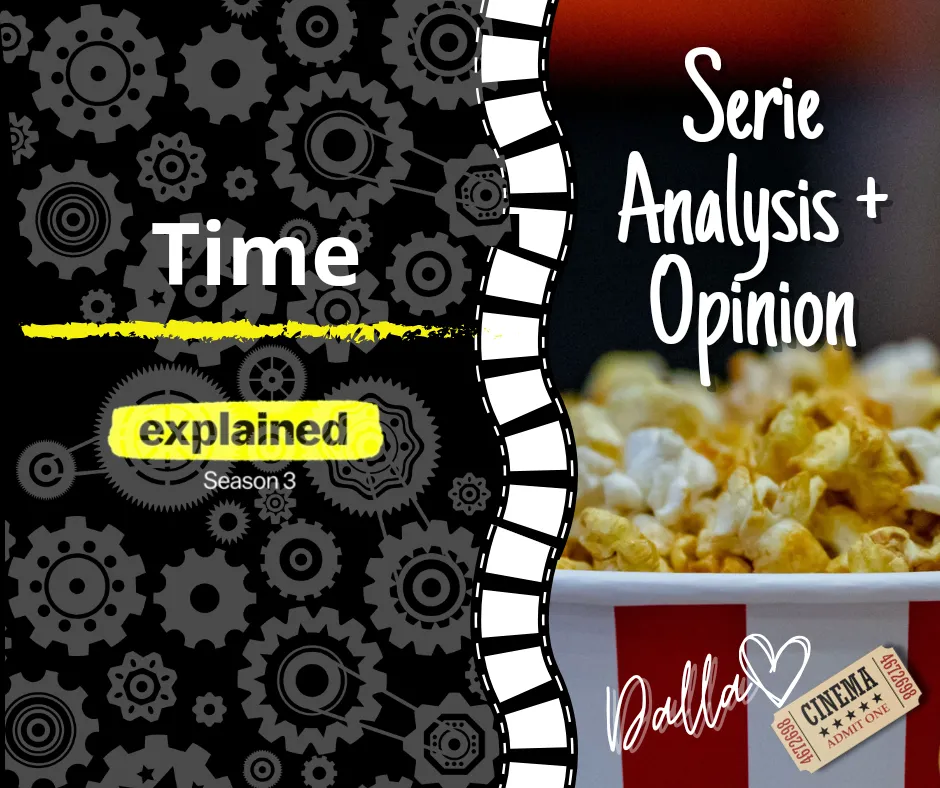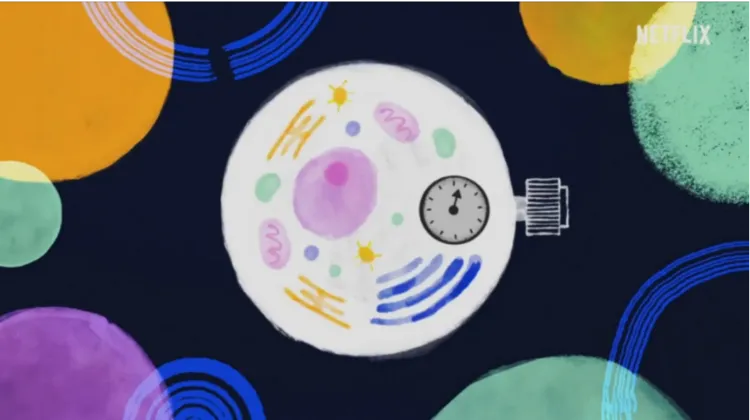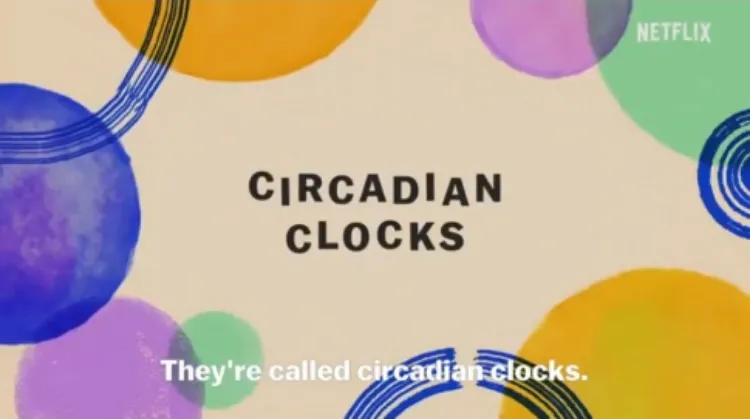

¡Saludos queridos espectadores del cine de Hive! El día de hoy siguiendo con mis post donde analizo los capítulos de la serie documental "Explained" de la plataforma Netflix, también conocida como "En Pocas Palabras", vengo a hablarles de este capítulo de la tercera temporada, titulado: El Tiempo.
Greetings dear viewers of Hive Cinema! Today continuing with my posts where I analyze the chapters of the documentary series "Explained" of the platform Netflix, I come to tell you about this chapter of the third season, entitled: El Tiempo.

Les cuento que este capítulo me pareció algo complicado de entender, porque para mí es un tema que siempre ha sido bastante complejo, ya que el tiempo no es algo lineal, como muchos creen, sino que se basa en varias dimensiones y, por ende, lo que conocemos como tiempo parece no ser todo lo que vemos como el simple paso de los segundos, las horas y los días.
En el capítulo empieza hablando de que el tiempo es básicamente una concepción creada por el hombre, cosa que siempre hemos escuchado decir, pero que, en términos generales, aun cuando no había sido concedido por él, de por sí ha existido siempre y, de hecho, se ha comprobado que ha sido necesario para la evolución humana.
Muchos animales y los seres vivos en general necesitan del tiempo para llevar a cabo sus procesos biológicos como parte de su ciclo de vida y muerte. En el caso de los seres humanos, por ejemplo, todas nuestras células siguen un ciclo circadiano para llevar a cabo sus funciones y este depende exclusivamente del paso del tiempo.
Un dato importante que analizan en todo el documental es que en el hipotálamo se controla este ciclo circadiano, que es una de las porciones más antiguas de nuestro cerebro y que siempre ha existido ahí, pero durante muchos años se ha intentado entender por qué existen las variaciones en las percepciones del tiempo, que no necesariamente dependen solo de esta área cerebral, sino que parece venir de la activación de un circuito cerebral mucho más complejo.
I tell you that I found this chapter somewhat complicated to understand, because for me it is a subject that has always been quite complex, since time is not something linear, as many believe, but is based on several dimensions and, therefore, what we know as time seems not to be all that we see as the simple passage of seconds, hours and days.
The chapter begins by talking about how time is basically a conception created by man, something we have always heard said, but that, in general terms, even if it had not been granted by him, it has always existed and, in fact, it has been proven that it has been necessary for human evolution.
Many animals and living beings in general need time to carry out their biological processes as part of their life and death cycle. In the case of human beings, for example, all our cells follow a circadian cycle to carry out their functions and this depends exclusively on the passage of time.
An important fact that they analyze throughout the documentary is that this circadian cycle is controlled in the hypothalamus, which is one of the oldest portions of our brain and has always existed there, but for many years they have been trying to understand why there are variations in the perceptions of time, which do not necessarily depend only on this brain area, but it seems to come from the activation of a much more complex brain circuit.



Y es que en el caso de los seres humanos no solo se detecta el tiempo como el paso de manecillas en las agujas de un reloj o de días en un calendario, sino que, además, la percepción de este se modifica por las emociones y algunos aspectos más.
Les explico, básicamente nos dan a entender cómo dependiendo de las edades o de cómo nos sintamos anímicamente, el tiempo puede percibirse o más rápido o más lento dependiendo del grado de atención que pongamos a ese factor y es lo que complica toda la ecuación lineal de lo que anteriormente conocíamos.
Es por ello, que muchas personas sienten que su adolescencia o infancia duró mucho y es porque probablemente fueron etapas cargadas de muchas emociones, muchos procesos o muchos conocimientos adquiridos, de hecho, hay estudios que comprueban que se asocia el ánimo bajo o hasta deprimido a el paso lento del lento, mientras que el ánimo exaltado al paso de este mismo de forma rápida.
In the case of human beings, time is not only detected as the passing of hands on the hands of a clock or days on a calendar, but also the perception of time is modified by emotions and some other aspects.
I explain, basically we are given to understand how depending on age or how we feel emotionally, time can be perceived faster or slower depending on the degree of attention we put to that factor and that is what complicates the whole linear equation of what we previously knew.
That is why many people feel that their adolescence or childhood lasted long and it is probably because they were stages loaded with many emotions, many processes or much knowledge acquired, in fact, there are studies that prove that low or even depressed mood is associated with the slow pace of slow, while the exalted mood to the passage of the same quickly.



Todo esto lo explican porque para hablar del tiempo se debe tomar en cuenta también el espacio, ya que su percepción va a depender, además de eso que les dije anteriormente, de donde nos encontramos en la totalidad del espacio.
Esto nos lo dan a entender explicando que la estructura del tiempo no es lineal, sino que es tridimensional y que probablemente es algo mucho más complejo y amplio que lo que conocemos, solo que nosotros no somos capaces de percibirlo más allá de lo que recordamos a través de la memoria inmediata, mediata y tardía o solo a través del paso de los días.
Esto es una teoría, aunque de cierta forma la han comprobado cuando han enviado personas fuera de la órbita de la tierra, cuando han viajado en aviones alrededor del mundo a diferentes velocidades o cuando algunas personas voluntariamente se han sometido a experimentación encerrándose en cuevas alejados de cualquier artefacto u objeto que pueda indicarles que hora o día de la semana es.
Gran parte del documental habla sobre estas experimentaciones e intentan hacernos ver la idea de que tal vez, como el tiempo no es algo lineal, pudieran existir individuos en varias dimensiones viviendo en el mismo momento y que, como el tiempo que percibimos es una pequeña parte del todo, en algún momento de la historia podríamos viajar en él.
All this is explained because in order to talk about time, space must also be taken into account, since its perception will depend, in addition to what I said before, on where we are in the totality of space.
They give us to understand this by explaining that the structure of time is not linear, but three-dimensional and that it is probably something much more complex and broader than what we know, only that we are not able to perceive it beyond what we remember through immediate, mediate and late memory or only through the passage of days.
This is a theory, although in a certain way they have proven it when they have sent people out of the earth's orbit, when they have traveled in airplanes around the world at different speeds or when some people have voluntarily subjected themselves to experimentation by locking themselves in caves away from any artifact or object that could tell them what time or day of the week it is.
Much of the documentary talks about these experiments and tries to make us see the idea that perhaps, as time is not something linear, there could be individuals in several dimensions living at the same moment and that, as the time we perceive is a small part of the whole, at some point in history we could travel in it.



Por supuesto todo lo que dije en esas últimas líneas es suposición, lo que se sabe hasta ahora es que la única forma que tenemos de viajar en el tiempo es a través de los recuerdos y las predicciones del futuro a partir de la experiencia, sin embargo explican gráficamente por qué esta teoría podría tener mucho de veracidad.
Me gustó que el capítulo termina de una forma bastante filosófica, ya que motivan al espectador a vivir intensamente en el ahora, pues son las emociones satisfactorias quienes harán que estos recuerdos puedan permanecer más fuertes en la memoria y por ende en el futuro podamos viajar a este pasado más fácilmente recordándonos que la capacidad de recordar es la característica fundamental que ha separado al homosapiens de sapiens y por ende es una de las mayores características evolutivas.
Todo el capítulo está planteado de una forma muy gráfica y bien explicada a través de ejemplos, dibujos, imágenes y entrevistas con científicos y, por supuesto, hay otros muchos detalles interesantes que me salté, pero complejos para mí, si tú eres uno de los que disfruta de estas cosas probablemente te agradaran mucho esos detalles, pero si eres como yo puedes hacer lo que yo hice, es decir, solo tomar lo importante, les aseguro que es una especie de clase de 45 minutos que te permitirá aprender muchísimas cosas que estoy casi segura de que no sabías y, a la vez, recordar algunas otras.
Si llegaste hasta aquí cuéntame en los comentarios ¿Te gusta aprender de estos temas? ¿Te parecen complicados como a mi? ¿Crees en esas múltiples dimensiones de espacio y tiempo?…
Of course everything I said in those last lines is supposition, what is known so far is that the only way we have to travel in time is through memories and predictions of the future from experience, however they explain graphically why this theory could have a lot of veracity.
I liked that the chapter ends in a quite philosophical way, since they motivate the viewer to live intensely in the now, since it is the satisfactory emotions that will make these memories remain stronger in the memory and therefore in the future we can travel to this past more easily, reminding us that the ability to remember is the fundamental characteristic that has separated homosapiens from sapiens and therefore is one of the greatest evolutionary characteristics.
The whole chapter is laid out in a very graphic and well explained way through examples, drawings, images and interviews with scientists and, of course, there are many other interesting details that I skipped, but complex for me, if you are one of those who enjoy these things you will probably like those details a lot, but if you are like me you can do what I did, that is, just take what is important, I assure you that it is a kind of 45 minutes class that will allow you to learn a lot of things that I am almost sure you did not know and, at the same time, remember some others.
If you made it this far, tell me in the comments: Do you like to learn about these topics? Do you find them as complicated as I do? Do you believe in these multiple dimensions of space and time?


